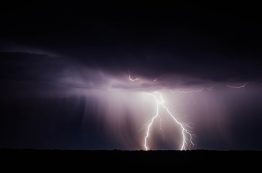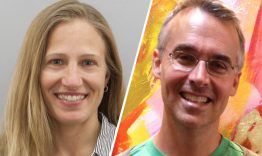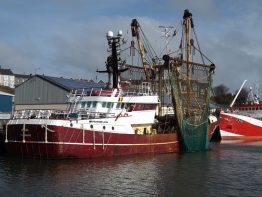For 20 years, dozens of University of Washington researchers have walked Hansen Creek — home to one of the densest sockeye salmon runs in Alaska’s Bristol Bay region — every day during spawning season, counting live salmon and recording information about the fish that died. After counting a dead fish — an inevitability here, either after spawning or in the paws of a brown bear — researchers throw it on shore to remove the carcass and not double-count it the next day.
Read more at UW Today »UW atmospheric scientists to study most extreme storms on Earth, up close
Two University of Washington atmospheric scientists—Angela Rowe and Lynn McMurdie—are leaving for a weeks-long, firsthand study of some of the fiercest storms on the planet. They will participate in RELAMPAGO, an international campaign in Argentina to monitor storms that occur east of the Andes near the slopes of another mountain range, the Sierra de Córdoba. The international team hopes to better understand how convective storm systems — the big systems that unleash torrential rains, hail and lightning — initiate and grow as they travel from the mountainous terrain eastward over the plains.
Read more at UW Today »New UW-authored children’s book offers a robot’s-eye view of the deep ocean
After years working on a cabled observatory that monitors the Pacific Northwest seafloor and the water above, a University of Washington engineer decided to share the wonder of the deep sea with younger audiences. The result is “ROPOS and the Underwater Volcano” by Dana Manalang, an engineer at UW’s Applied Physics Laboratory. The book’s illustrator, Hunter Hadaway, is the creative director at the UW-based Center for Environmental Visualization.
Read more at UW Today »Q&A with Harold Tobin, director of the Pacific Northwest Seismic Network
Earthquake expert Harold Tobin joined the UW this fall as professor of Earth and space sciences and director of the Pacific Northwest Seismic Network. While he comes from a faculty position at the University of Wisconsin, he’s no stranger to the risks posed by offshore faults like the Cascadia Subduction Zone, the source of our “big one.” UW News sat down with Tobin to learn a bit more about his research, experience and plans for the UW-based Pacific Northwest Seismic Network, a coalition among the U.S.
Read more at UW Today »High-res data offer most detailed look yet at trawl fishing footprint around the world
About a quarter of the world’s seafood caught in the ocean comes from bottom trawling, a method that involves dragging a net along the ocean’s shelves and slopes to scoop up shrimp, cod, rockfish, sole and other kinds of bottom-dwelling fishes and shellfish. The technique impacts these seafloor ecosystems, because other marine life and habitats can be killed or disturbed unintentionally as nets sweep across the seafloor.
Read more at UW Today »





